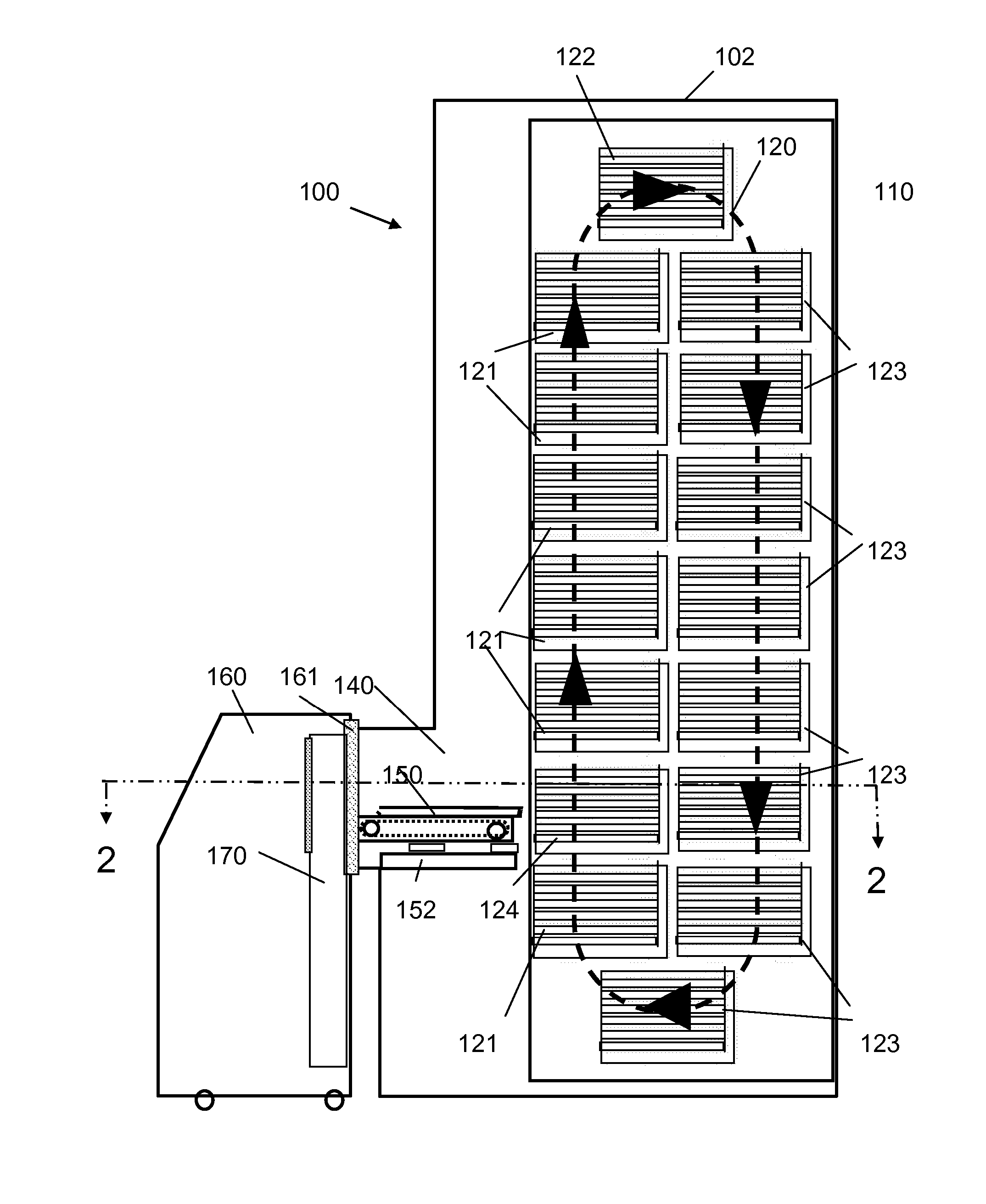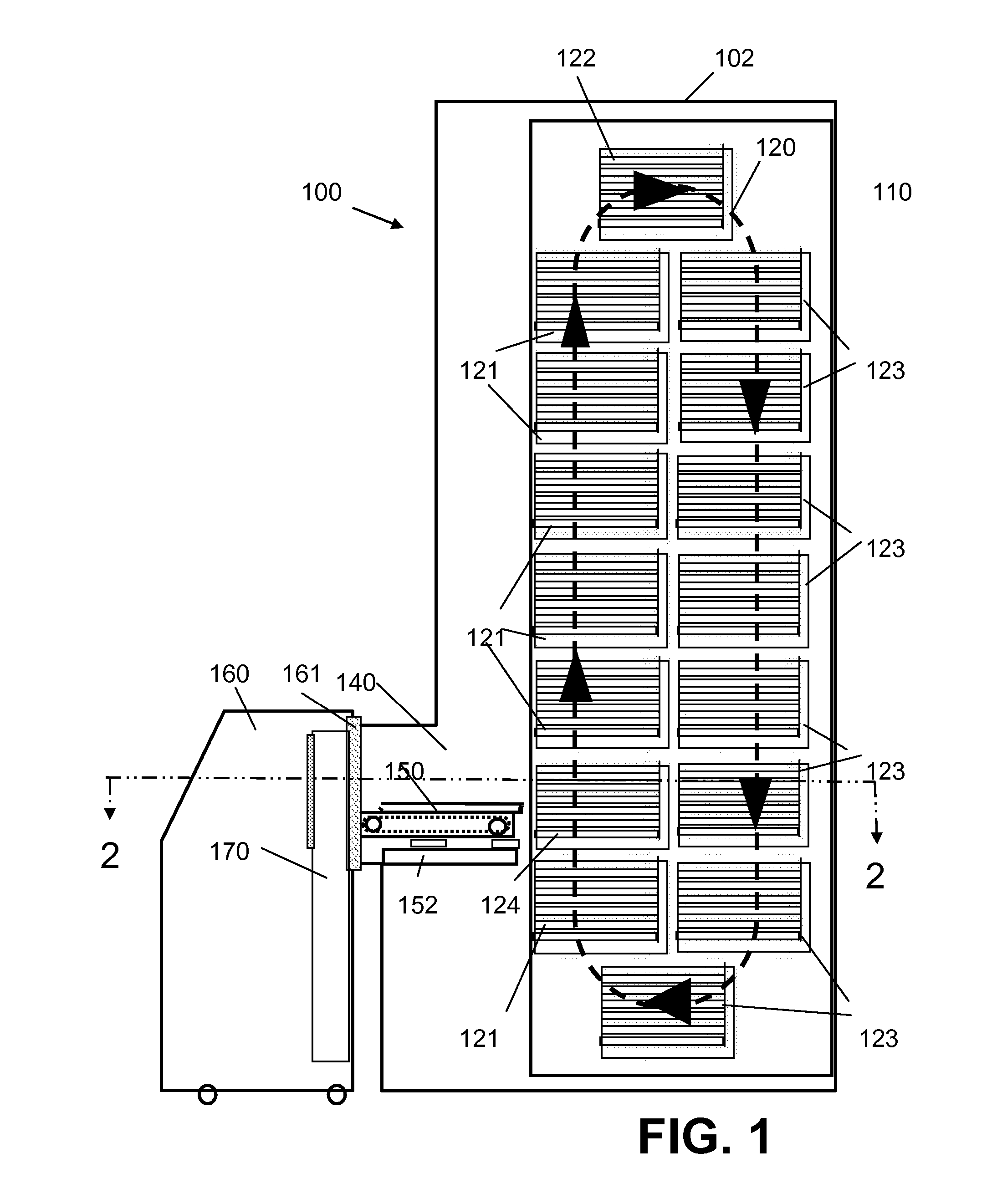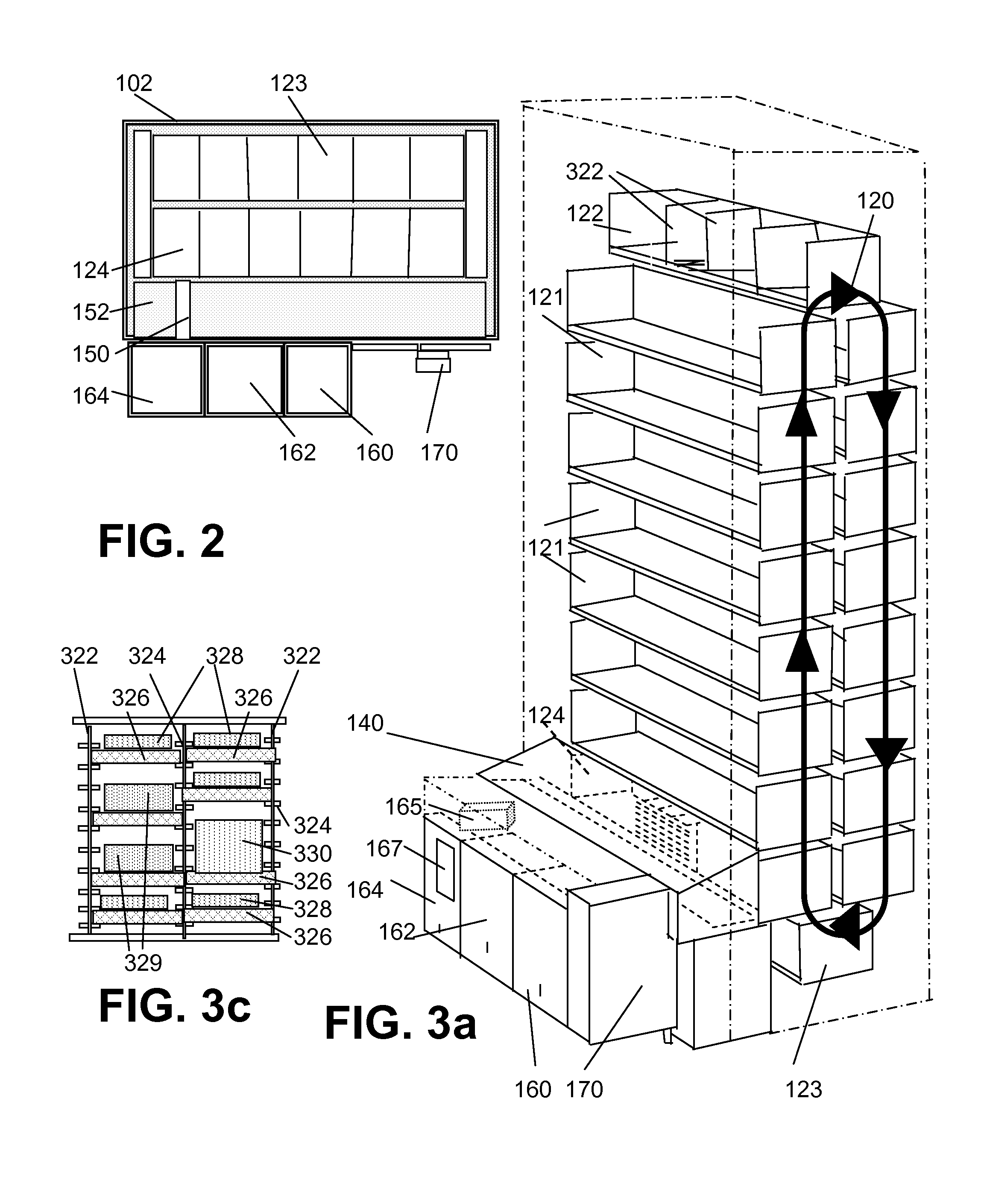Device and method for retrieving or replacing a tray within a storage compartment
a technology for storing compartments and devices, applied in the direction of biological material analysis, loading/unloading, instruments, etc., can solve the problem of substantially slow sample retrieval speed, and achieve the effect of minimizing temperature change and minimizing the size of the gap
- Summary
- Abstract
- Description
- Claims
- Application Information
AI Technical Summary
Benefits of technology
Problems solved by technology
Method used
Image
Examples
Embodiment Construction
[0041] For purposes of the detailed description of the preferred embodiments, the following definitions are used:
[0042] A “sample” is used to describe a material (compound, biological specimen, or other substance) that is or can be stored in a storage system, as well as a tube, vial and similar container which is the lowest unit of storage for retaining the stored material.
[0043] An “array” includes plates and racks that organize samples in a fixed arrangements. Racks hold removable sample containers while plates have non-removable wells. Such racks are generally configured as an array of vertical, open ended sleeves or slots, permitting access to the removable containers retained within the slots.
[0044] A “tray” is a flat frame or container the holds multiple arrays. Generally, all trays within the storage system will be of the same length and width, and the arrays within a given tray will all have the same size sample. Exemplary trays have footprints to receive up to six standa...
PUM
 Login to View More
Login to View More Abstract
Description
Claims
Application Information
 Login to View More
Login to View More - R&D
- Intellectual Property
- Life Sciences
- Materials
- Tech Scout
- Unparalleled Data Quality
- Higher Quality Content
- 60% Fewer Hallucinations
Browse by: Latest US Patents, China's latest patents, Technical Efficacy Thesaurus, Application Domain, Technology Topic, Popular Technical Reports.
© 2025 PatSnap. All rights reserved.Legal|Privacy policy|Modern Slavery Act Transparency Statement|Sitemap|About US| Contact US: help@patsnap.com



